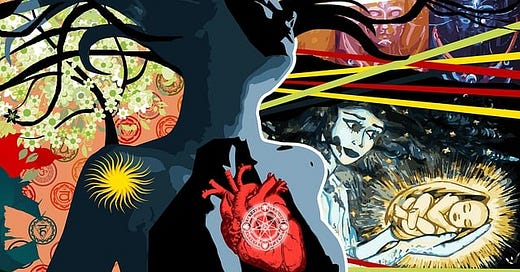The Soul's Search for Home: A Reflection on Community, Sobriety & Inner Connection
More often than not, I’m the kind of writer who waits for inspiration to strike—unexpected, electric, and usually born out of a soul-to-soul moment with another human being or a deep internal stirring. I don’t force the words. I wait until they arrive on the wings of something real, something felt. I let life lead the way.
Lately, what’s been rising to the surface is the ache for community.
In nearly every conversation, I hear people whisper versions of the same story: “I feel alone,” “I don’t have a group,” “Where are my people?” This yearning isn’t superficial—it’s spiritual. It's a desire to be seen, held, and understood in a world that often feels fast, fragmented, and disconnected.
We are all longing for home—not just a physical place, but a soul space where we are met as we are.
Making friends as adults is one of the more challenging aspects in life. Creating a community where we feel both autonomous and fully embraced by the whole feels even harder. And in the absence of true connection, many of us—myself included—have tried to fill the void with something else. Alcohol, scrolling, shopping, overworking—temporary fixes for a deeper hunger. These are not signs of weakness, but signs of yearning. These are the ways we try to soothe the parts of us that miss being seen, held, and mirrored.
For a long time, I tried to fill that longing in ways that didn’t truly nourish me. I didn’t always recognize it, but alcohol had become a companion that filled the silence when I didn’t yet know how to be with myself. It softened the ache of loneliness, dulled the edges of stress, and made disconnection feel a little less painful. Drinking was woven into my social life, into celebration, even into self-care. But behind the scenes, it was numbing. It was a placeholder. A way to feel connected when I didn’t know how to reach for real connection. A way to cope with the discomfort of not knowing where I fit in the world.
But what it couldn’t do—what it never could do—was bring me closer to myself.
This June, I’ll be three years sober. Truthfully, sobriety cracked open something sacred within me—it helped me start listening. It led me back to the place I had been avoiding: my own heart.
Sobriety hasn’t just been about removing a substance from my life. It’s been about learning how to live—fully, presently, and sometimes uncomfortably—but also with more clarity and grace than I ever thought possible. It’s been about rebuilding my relationship with myself, and with others. It’s been about opening space for authentic community to enter.
Because when we remove what numbs, we begin to feel. And feeling is the first step to healing.
This healing journey has been supported, deepened, and illuminated through the lens of Bio-Geometric Integration (BGI)—a form of chiropractic care that doesn’t just treat the body, but honors the soul’s geometry.
Unlike traditional chiropractic, which focuses mostly on physical misalignments, BGI sees the body as a symphony of energy, vibration, and life experience. It recognizes that the stress we don’t fully process—whether physical, emotional, or mental—gets stored in the body as dissonant “notes.” These aren’t just knots in the muscles; they are unintegrated experiences that create tension, fragmentation, and disconnection within.
BGI is about more than adjustment—it’s about integration. It’s about helping the body remember its natural wholeness. Each touch, each release, each breath in a BGI session creates space for the body to process what it couldn’t before. It gives us a second chance to feel, learn, and heal.
This is what community must also do for us.
It must help us integrate the parts of ourselves we were once taught to hide.
But here’s the truth: we can’t build true community until we have made contact with the community within.
The first “gathering” must happen inside us—where our mind, body, and spirit learn how to sit in circle again.
To connect to the innate intelligence that true chiropractic philosophy honors—the part of us that knows how to heal when we’re safe enough to feel.
So how do we build community that reflects this kind of sacredness?
We begin with presence.
We build community when we:
Lead with love. Repair and release any negative self-talk. Offer yourself (and others) the kindness, support, and presence you wish someone would give you. Start here and witness the shift in the world around you.
Stop performing and start revealing. Our imperfections are not barriers to connection—they are the bridges. We don’t need to be “all together” to be together. We just need to be honest.
Prioritize integration over escape. Whether through sobriety, breath, movement, or chiropractic, we choose practices that deepen our relationship to self instead of avoiding it.
Create from coherence. When our inner life is in harmony, we naturally begin to attract relationships that feel aligned, intentional, and real.
Trust the geometry of life. Just like BGI honors the body’s natural energetic design, we begin to trust that life has a pattern—and the right people will arrive in divine timing.
If you’re feeling isolated, I want to remind you:
You’re not broken. You’re becoming.
Your people are not behind you—they’re ahead, waiting for the real you to arrive.
And maybe, just maybe, you are the one being called to initiate the gathering.
To create a community that heals by simply being safe enough to feel.
And if you’re on a sober path like me—or considering it—know this: the clarity, connection, and calm you crave is already within you. You don’t have to earn it. You just have to remember it.
The soul knows the way home. We just have to listen.



